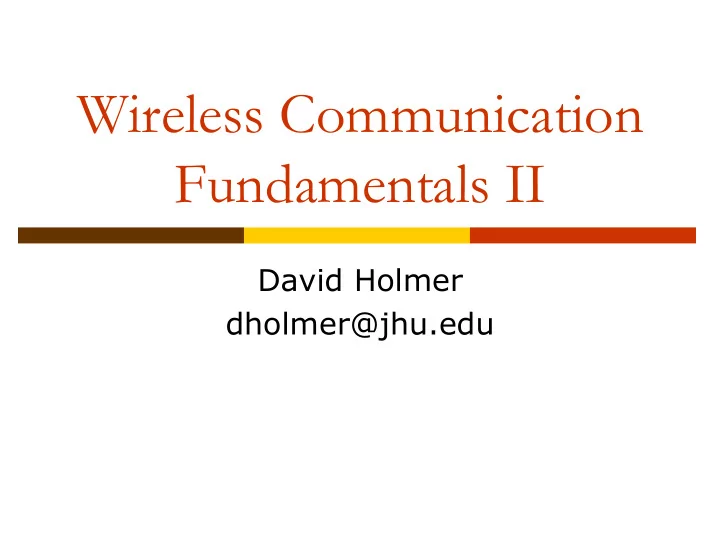

Wireless Communication Fundamentals II David Holmer dholmer@jhu.edu
Review � Wireless = electro-magnetic waves � Path-loss over distance � Multi-path reflections � Modulation
Symbol Rate & Bandwidth � Modulation allows transmission of one of several possible symbols (two or more) � Data stream is encoded by transmitting several symbols in succession � Symbol rate ≈ bandwidth � Throughput (bits/sec) � Spectrum usage (Hz) � Inter-symbol interference (ISI) occurs unless delay spread << symbol time
Thermal Noise � Ever-present thermal noise in wireless medium � Sums with any wireless transmission � Potentially causes errors in reception (digital) or degradation of quality (analog) � Effectively limits transmission range when transmitting signal strength falls below noise floor � -174 dBm/Hz
Thermal Noise Calculation � Depends on channel bandwidth � About 25 MHz for 802.11b or 802.11a channel � = -174dBm/Hz + 10log(bandwidth in Hz) � So for 802.11 � Noise Floor is about -100 dBm � -100 dBm = 10log( .0000000000001 Watts )
Noise Limits Transmitting Distance Signal to Noise Ratio Short range transmission (low path loss) (SNR) + = High Long range transmission (high path loss) = + Low
Physical Channel Properties Review � Wireless signal strength � Transmit power � Loss over distance (falls off by d 2 ) � Shadowing (e.g. absorption by walls) � Multi-path (e.g. bouncing off of metal objects) � Noise � Thermal noise floor � Environmental noise (e.g. microwave ovens) � Channel quality � Related to signal to noise ratio
Recommend
More recommend